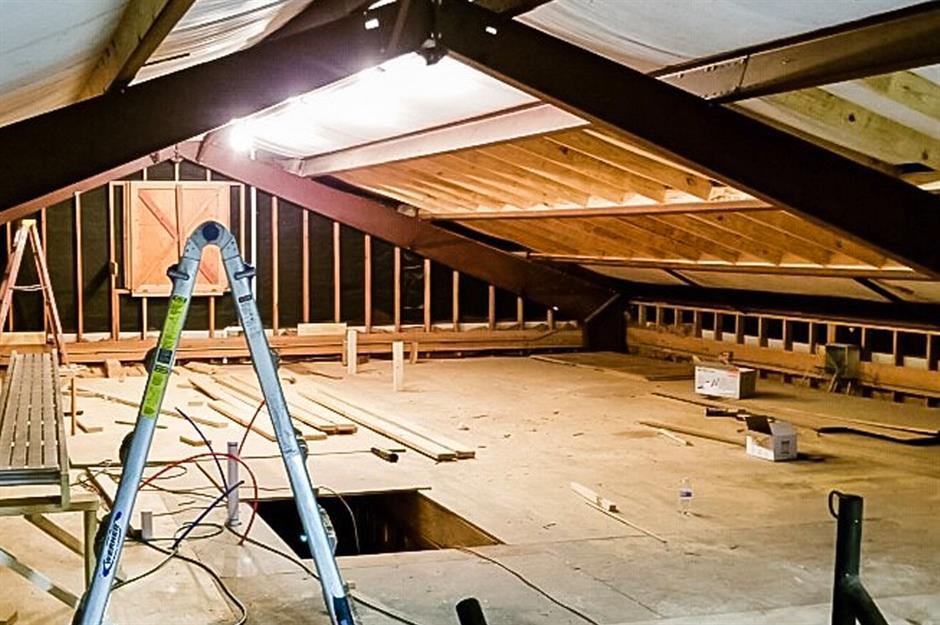Soundproofing is an essential aspect of creating a peaceful home environment, and when it comes to attics, it can be especially important. Whether you’re planning to convert your attic into a living space or simply want to reduce noise from above, knowing how to soundproof an attic floor can make all the difference.
Soundproofing an attic floor involves using the right materials and techniques to minimize noise transmission between floors. In this comprehensive guide, we will explore the step-by-step process of soundproofing an attic floor and ensure you have a tranquil and serene home.

Understanding the Basics of Soundproofing
What is Soundproofing?
Soundproofing is the process of reducing or eliminating sound transmission from one area to another. It involves using materials and construction techniques to block or absorb sound waves.
Why Soundproof an Attic Floor?
Attics are often transformed into functional spaces like home offices, playrooms, or even bedrooms. Soundproofing the attic floor prevents noise from traveling to the floors below, ensuring privacy and comfort for everyone in the house.
Materials Required for Soundproofing
Soundproofing Insulation
The first step in soundproofing an attic floor is choosing the right insulation. Materials such as fiberglass, mineral wool, and cellulose are excellent choices for absorbing sound.
Soundproofing Underlayment
Underlayment is a thin layer of material placed between the floor and the subfloor. It helps reduce impact noise and is essential for soundproofing.
Acoustic Panels and Mats
Acoustic panels and mats can be used on the attic floor to further enhance soundproofing. These materials are designed to absorb sound and prevent it from bouncing around the room.
Steps to Soundproof an Attic Floor
Step 1: Prepare the Attic
Before you begin soundproofing, clear out the attic space and remove any debris or obstacles. This will make it easier to install soundproofing materials.
Step 2: Install Insulation
Start by installing soundproofing insulation between the floor joists. This will help absorb airborne noise and improve the overall soundproofing of the attic floor.
Step 3: Add Soundproofing Underlayment
Lay down the soundproofing underlayment on top of the insulation. This will help reduce impact noise and create a barrier between the attic floor and the rooms below.
Step 4: Install Acoustic Panels and Mats
Place acoustic panels and mats on the attic floor to further enhance soundproofing. These materials will absorb sound waves and prevent them from traveling through the floor.
Additional Tips for Effective Soundproofing
Seal Gaps and Cracks
Use sealant or caulk to fill any gaps or cracks in the attic floor. This will prevent sound from leaking through and improve the overall soundproofing.
Consider Carpet or Rugs
Adding carpet or rugs to the attic floor can further reduce noise transmission by absorbing sound and reducing impact noise.
Use Heavy Drapes or Curtains
Heavy drapes or curtains can be used to cover windows in the attic, helping to block out external noise and improve the soundproofing of the space.
FAQs
What is the most effective soundproofing material for an attic floor?
Fiberglass, mineral wool, and cellulose are considered some of the most effective soundproofing materials for an attic floor.
Can I soundproof my attic floor on my own?
Yes, with the right materials and guidance, you can soundproof your attic floor as a DIY project.
How much does it cost to soundproof an attic floor?
The cost of soundproofing an attic floor depends on the materials used and the size of the space. On average, it can range from $500 to $2,000.

Conclusion
Soundproofing an attic floor is a worthwhile investment that enhances the comfort and privacy of your home. By following the steps outlined in this guide and using the right materials, you can create a peaceful and quiet environment. For more tips on attic renovation, you can visit here.
Additionally, check out the latest tips on attic HVAC ductwork here, and explore more ideas for attic home office here.
This article contains affiliate links. We may earn a commission at no extra cost to you.




